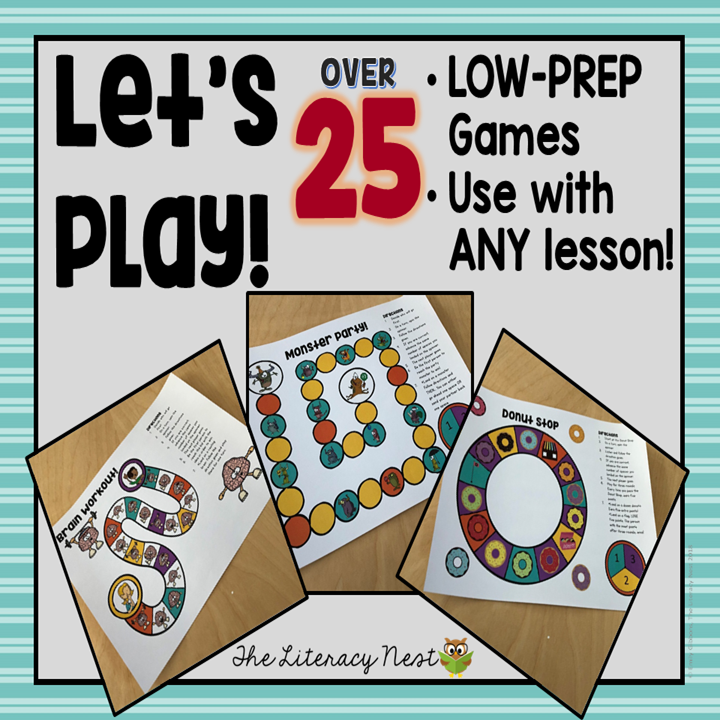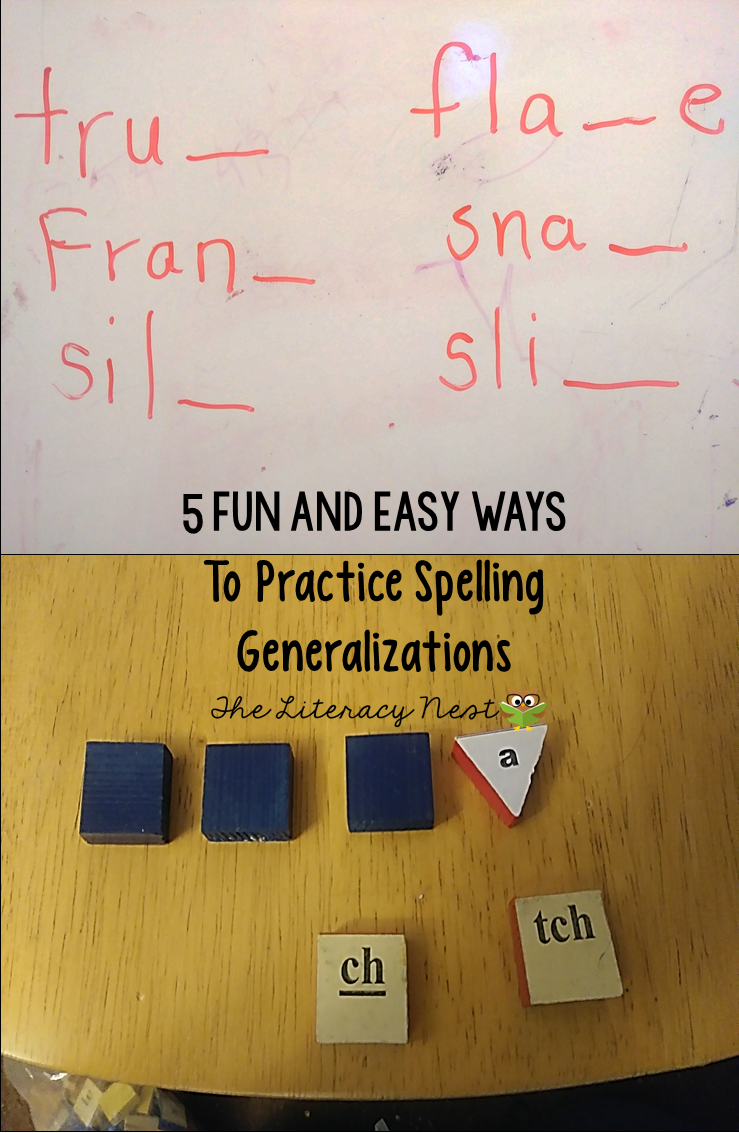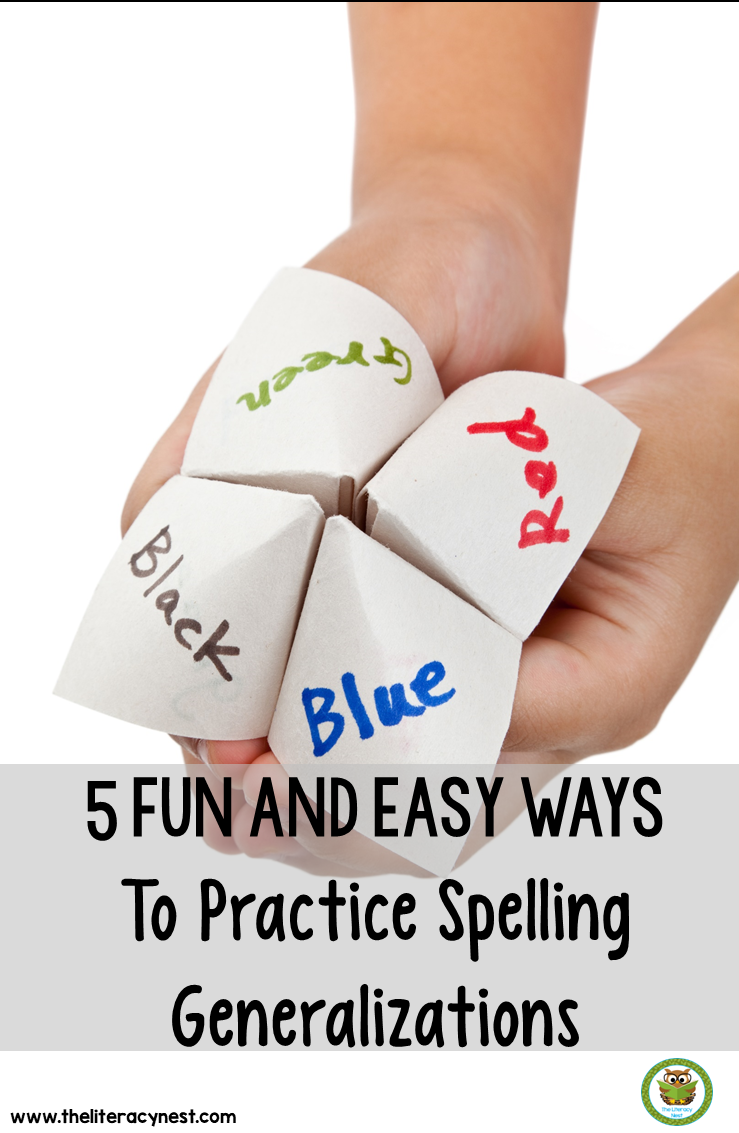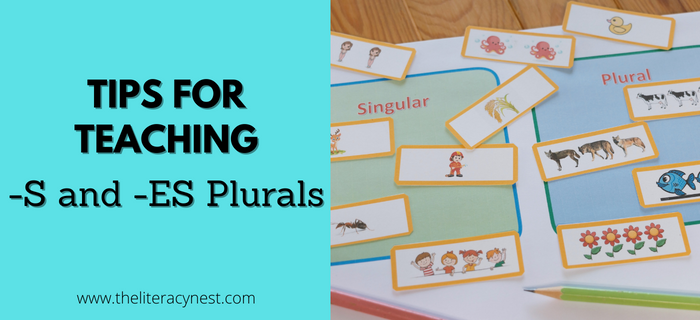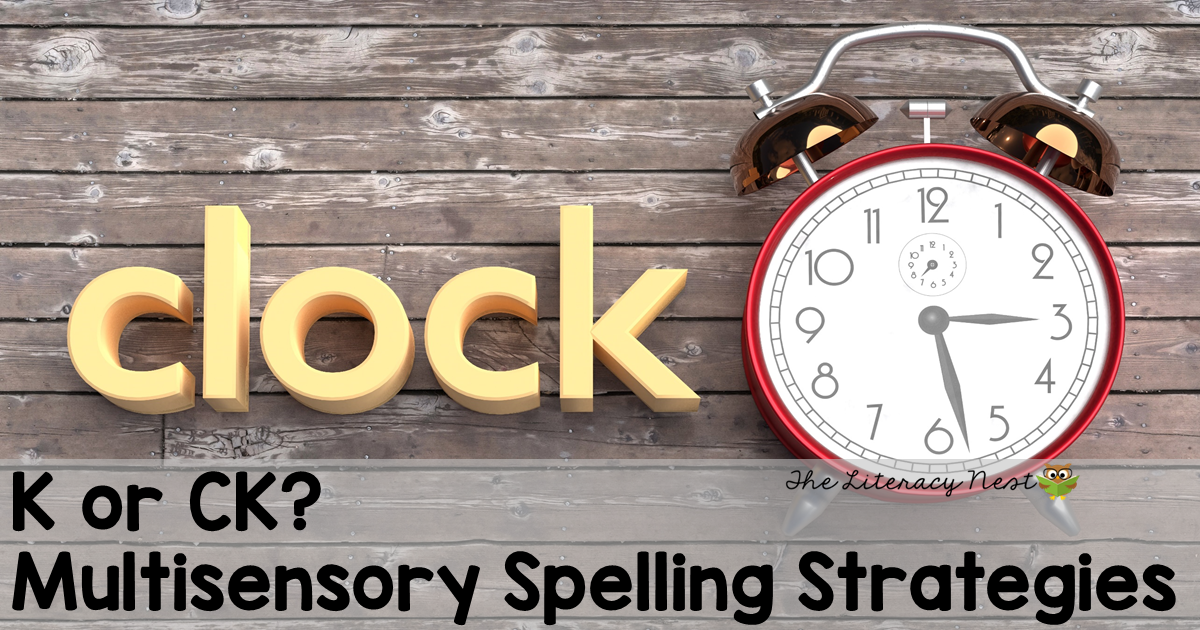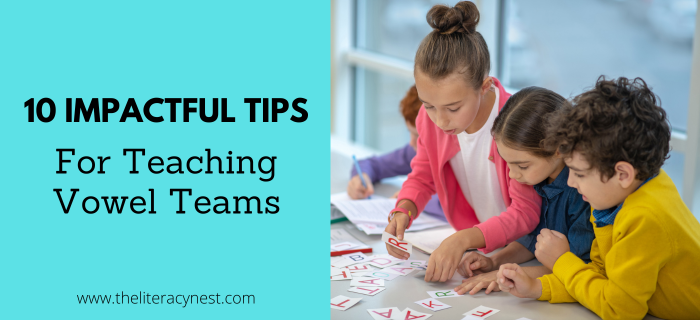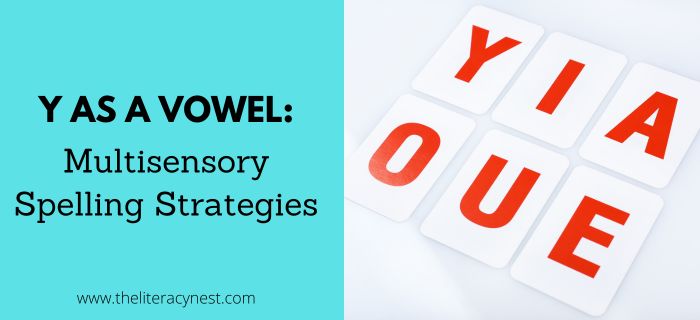Share:
5 Fun and Easy Ways to Practice Spelling Generalizations
When you are working with children in Orton-Gillingham lessons or other reading interventions, there is often a big discrepancy between our students’ proficiency with understanding a spelling generalization and their proficiency with the application of that spelling generalization. It takes a lot of practice to speed up the process and build automaticity with these orthographic patterns, as well as develop the ability to effectively self-monitor their spelling for accuracy.
The most obvious time to incorporate practice and review of the spelling generalizations is during
SOS (Simultaneous Oral Spelling). However, I find that with so many new concepts to review and the abundant practice that spelling generalizations require, my students are more successful if I weave in practice in other places in the lesson as well. By choosing one of these techniques on a regular basis, it gives students the opportunity to practice the skill in different ways and to become flexible and fluent with their knowledge.
1. Warm-up
I will often write 6 or 8 fill-in-the-blank words on the white board. At the beginning of the lesson or right before introducing the new concept, I will have the student fill in the missing letter. This is especially useful when introducing a similar spelling generalization. For example, warming up with the k/ck generalization is a natural segue to introducing the ch/tch generalization, while the ou/ow generalization review lends itself to the introduction of the au/aw generalization. I like to do this with white board markers, but it could just as easily be done on a half sheet of photocopy paper in a group setting.
2. Phonemic Awareness
I frequently make a brief phonemic awareness activity part of my practice with new or recent spelling rules. Since the spelling choice often depends on hearing the sound that precedes the phoneme in question or the placement in a word, this is a natural extension of a phoneme segmentation activity. Using blocks, tiles, bingo chips or pennies, students segment the sounds in a word. However, instead of using a blank block or tile for the targeted spelling rule, students choose between tiles with the 2 spelling choices. This builds the connection between hearing the short vowel sound and the visual pattern that should follow.
3. Filler Activity
When a student needs extensive practice with a spelling generalization, I like to use this technique because it is so time flexible. Depending on how quickly other portions of the lesson plan go, we can do just one or two words or a larger number. Begin with a randomized list of words that are within concepts that a student has been taught, but exhibit the spelling rule. For example, a student in Level 1 may have words like truck and snake and milk, while a student further along in their Orton Gillingham sequence may have those words as well as speak, stork and chunk.
Using a game board with a colored pushpin on a bulletin board or a graph to color to keep track of progress, students are asked to spell a word. For each word that they spell correctly, they can move forward one space or color in a square on the graph. Another variation is to have the student pick a number within a certain range. For a quicker round, ask for a lower number, if you have more time you can have the student choose a bigger number. Students spell a word correctly in order to roll the dice. Keep a running total. See how close they can get to their target number without going over.
4. SOS & Dictation
While there is not always room in the lesson plan to explicitly choose spelling rule practice as part of
SOS and Dictation sentences, but words that apply spelling generalizations frequently appear. It is second nature to us to review the spelling rule if a student makes an error. However, all too often it seems like students choose “the other one” if they think they’ve made a mistake. So, rather than only reviewing the spelling generalization if a student is incorrect, I will frequently draw their attention to a time that they spelled a word correctly and ask them to explain why they made that spelling choice. For example, many students become proficient at spelling the word lunch because they see it on the schedule daily at school. However, to explain why they use ch rather than tch, they need a clear understanding of the rule. If they can’t do so, you have another opportunity to reiterate the rule. For more SOS practice, read
Taking A Crack At Spelling.5. Exit Ticket
Before letting students go at the end of a lesson, you can have them choose the correct spelling similar to a fill-in-the-blank activity. There are lots of fun ways to randomly select one word and keep things exciting. With some simple color coding, you can even have different spelling generalization practice going at the same time.
· A jar of popsicle sticks that have challenge questions such as: k or ck? sna____
· Index cards with different fill-in-the-blank spelling choice
· Rolling a write-on wipe-off die with an unfinished word on each side
· Using a fortune teller game with a spelling question inside
The exit ticket is also a great way to quickly see which students may need more practice in a group or whole class setting. Have each student choose their own card or stick and choose the correct spelling and return their card as they line up or leave the room.
Just learning a spelling rule isn’t enough. Students need abundant opportunities for review and practice in order to make new learning truly their own. When you see a struggling student correcting a classmates spelling because they’ve mastered a rule, the pride they feel in their achievement is unmistakable. For more spelling tips, check out Visualizing Spelling Strategies.
For more easy game ideas to practice spelling generalizations, check out Low-Prep game boards.
Thanks for stopping by my blog today!
Share:
